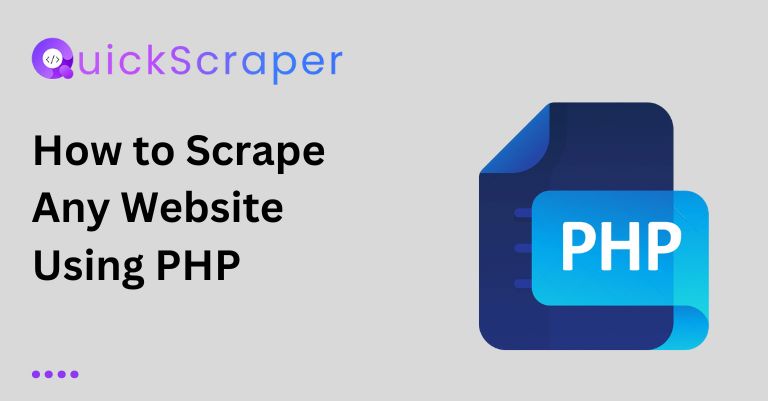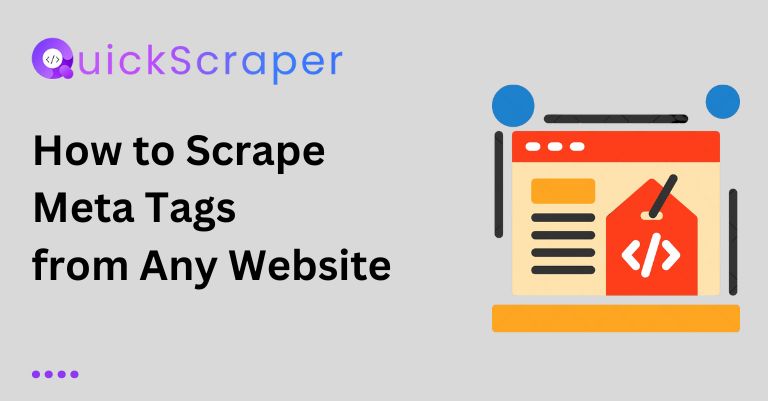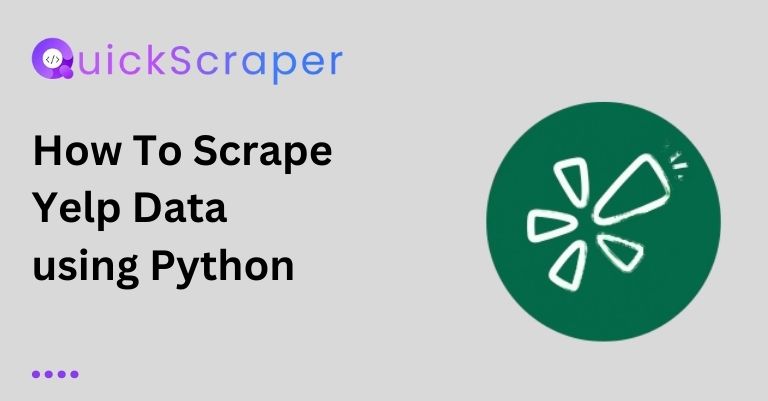
How to Scrape Any Website Using PHP
How to Scrape Any Website Using PHP Do you hate manually copying and pasting data from websites? With web scraping, you can automate the

In this blog post, we will learn how to scrape stock prices from a financial website using Python. We will be using the requests and BeautifulSoup libraries to fetch the HTML content of a webpage and then parse it to extract the desired data.
1. Import necessary libraries
Python
import requests
from bs4 import BeautifulSoup
import json
requests: This library is used to make HTTP requests to websites and retrieve their content.BeautifulSoup: This library is used to parse HTML content and extract data from it.json: This library is used to work with JSON data.2. Obtain a Quick Scraper Access Token
To use the Quick Scraper API, you will need to obtain an access token. You can get a free token by signing up for an account on [invalid URL removed].
3. Set up the API request
Python
access_token = 'YOUR_ACCESS_TOKEN' # Replace with your actual access token
url = f"<https://api.quickscraper.co/parse?access_token={access_token}&url=https://seekingalpha.com/symbol/AAPL>"
We are using the Quick Scraper API to simplify the process of fetching the HTML content of the target webpage. The API takes two arguments:
access_token: Your Quick Scraper access token.url: The URL of the webpage you want to scrape.4. Make the API request and parse the HTML content
Python
response = requests.get(url)
soup = BeautifulSoup(response.text, 'html.parser')
requests.get(url) method sends a GET request to the specified URL and retrieves the HTML content of the webpage.BeautifulSoup library is used to parse the HTML content into a tree-like structure that can be easily navigated.5. Extract the stock data
Python
symbol_name = soup.select_one('div[data-test-id="symbol-name"] h1').text.strip()
symbol_price = soup.select_one('span[data-test-id="symbol-price"]').text.strip()
soup.select_one('div[data-test-id="symbol-name"] h1') selects the first <h1> element within a div element that has the attribute data-test-id set to "symbol-name". This element most likely contains the name of the stock..text.strip() extracts the text content from the selected element and removes any leading or trailing whitespace characters.soup.select_one('span[data-test-id="symbol-price"]').text.strip().6. Save the data to a JSON file
Python
data = {
"name": symbol_name,
"price": symbol_price
}
with open('symbol_data.json', 'w') as f:
json.dump(data, f)
print("Data saved to symbol_data.json")
data to store the scraped stock data.json.dump function is used to convert the Python dictionary to a JSON string and write it to a file named symbol_data.json.7. Scheduling the script to run daily
To scrape stock prices every day, you can use a task scheduler like cron on Linux/macOS or Task Scheduler on Windows. You can set the scheduler to run the Python script at a specific time each day.
Additional Considerations
I hope this blog post helps you get started with scraping stock prices using Python. By following these steps, you can create a Python script that automatically scrapes stock prices from a financial website and saves the data to a JSON file every day.

How to Scrape Any Website Using PHP Do you hate manually copying and pasting data from websites? With web scraping, you can automate the

How to Scrape Meta Tags from Any Website Meta tags are snippets of text that describe a website’s content, and search engines use them to

How to Scrape Images from Any Website Scraping images from websites can be a useful technique for various purposes, such as creating image datasets, backing

How to Scrape a Website Without Getting Blocked: A Developer’s Guide Web scraping, as a powerful tool, is beneficial for developers, giving them the power

How To Scrape Yelp Data using Python Web scraping is the process of extracting data from websites automatically. In this blog post, we’ll learn

How to Scrape Stock Prices Every Day using Python In this blog post, we will learn how to scrape stock prices from a financial website
By clicking “Accept”, you agree Quickscraper can store cookies on your device and disclose information in accordance with our Cookie Policy. For more information, Contact us.